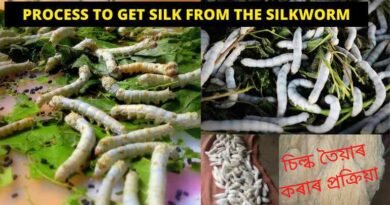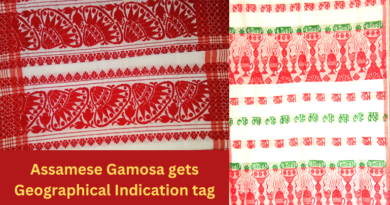History of Assamese Gamosa – Origin
History of Assamese Gamosa – Origin
“Phulam Gamusa’ is a vital part of Assamese culture. Gamusa is an inescapable piece of all services in all ceremonies whether religious, marriage, gatherings, invitations regarding people and visitors. Gamusa was broadly utilized in the hour of Sri Manta Sankardeva , Sri Madhabdev and Ramananda utilized “Gamusa as ‘Headgear’ when they visited to sankardev’s significant other to inform her of his sad demise (passing) of Sri Sankardev. It demonstrated their regards to older folks and Guru Patni’. Assamese individuals utilized ‘Gamusa’ with red Anchu’ at both the closures, as head gear during the rule of Ahom King Syo-Ka-Pha. (History of Assam , by Mr. Sukumar Mahanta). It isn’t appropriately realized that, which network had first begun utilizing Phulam Gamusa in Assam But the Assamese history says that mountains may have first begun Phulam Gamusa in Assam.
‘Gamusa’ is an important property of Assam. No significant work can be finished without utilizing Gamusa. ‘Guru Asans of Satras and sanctuaries; Nam prasang, puja, bihu celebrations, instruments, wherever the significance of Gamusa is needed and It unites the entire Assamese individuals. It is the image of feeling and belongingness, inviting individuals, regarding older folks, love and care to friends and family. ‘Bhomoka Phulia Gamusa” is the proof and illustration of the abilities of Assamese weavers.
The birthplace of “Gamusa’ had come from Sanskrit word ‘Gatro Marjoni” which means the bit of texture used to ingest water/to wipe body subsequent to scrubbing down, the bit of texture to keep betel nut, the bit of texture utilized as head gear (Hemchandra Baruah). As per Dr. Birinchi Kr. Baruah, Gamusa is known as angvastra, came from the word ‘Angochha’ which implies Gamusa. The length insightful boundary and across line with configuration is regularly of red shading which is known as ‘Anchu’. Initially, red tone was gotten from the plant ‘Anchu’, scientific name Morinda Angustifolia. Explicitly red tone is identified with the cobur of blood. Initially ‘Gamusa was known as ‘Phali’ (Dasham one piece of Bhagawat) used to tie in head or hair. It is otherwise called ‘Mukhosa’ used to wipe face. Red tone is the image of certainty and strength That is way it is utilized in Phulam Gamusa. Further the vast majority of the blossoms of spring season are of red tone and they decorate the earth. Along these lines, red tone is utilized in Phulam Gamusa to make the climate more excellent.
Gamusa is hand woven plain weaved texture. Despite the fact that birthplace isn’t known appropriately, history says that in Assam the utilization of Phulam Gamusa’ had begun by Alpines and weaving measure just as strategies presumably came from China (History of Assam Culture) Various kinds of Gamusa are accessible. Their capacities and sizes are extraordinary. Assamese individuals are valiant. During the assault of Mughals and Maans, Assamese warriors demonstrated their fearless and intensity during war and gamusa is the image of that strength. Red tone is the image of certainty and strength that is why it is utilized in Phulam Gamusa.
Further a large portion of the blossoms of spring season are of red tone and they improve the earth. Thus, red tone is utilized in Phulam Gamusa to make the climate more excellent. ) Gamusa assumes a significant job in assamese culture. Parcel of models can be refered to in this issue. Cotton yarn is utilized to weave Gamusa, in light of the fact that cotton retains water promptly, further it is anything but difficult to wash. To wipe the body in the wake of washing up or to carry betel nut, food items to the field or utilized as head gear and also to tie in the midriff (Tongali) during Bihu celebration, Gamusa serves us differently.
In 1884, S. R. Ward referenced in her book “Brief look at Assam”. “The ‘Gamosa’ (however it doesn’t relate being used with English article), man generally convey with their cash and “tamul-container”- betel leaf and aides, tied in the corner, in a course home spun material, with a guest and periphery at the closures”. Page-38.
B.C .Allen had explained in The Silk Cloths of Assam (1899), “Gamosas were made of muga or pat silk either plain or with line and some of the time shaded cotton yarn with stripes of silk or cotton. The longer ones 1.12′ by 16′ were worn by residents as a turban while more modest ones utilized as hachati, tamul gamosa (to hold betel-nut).”




